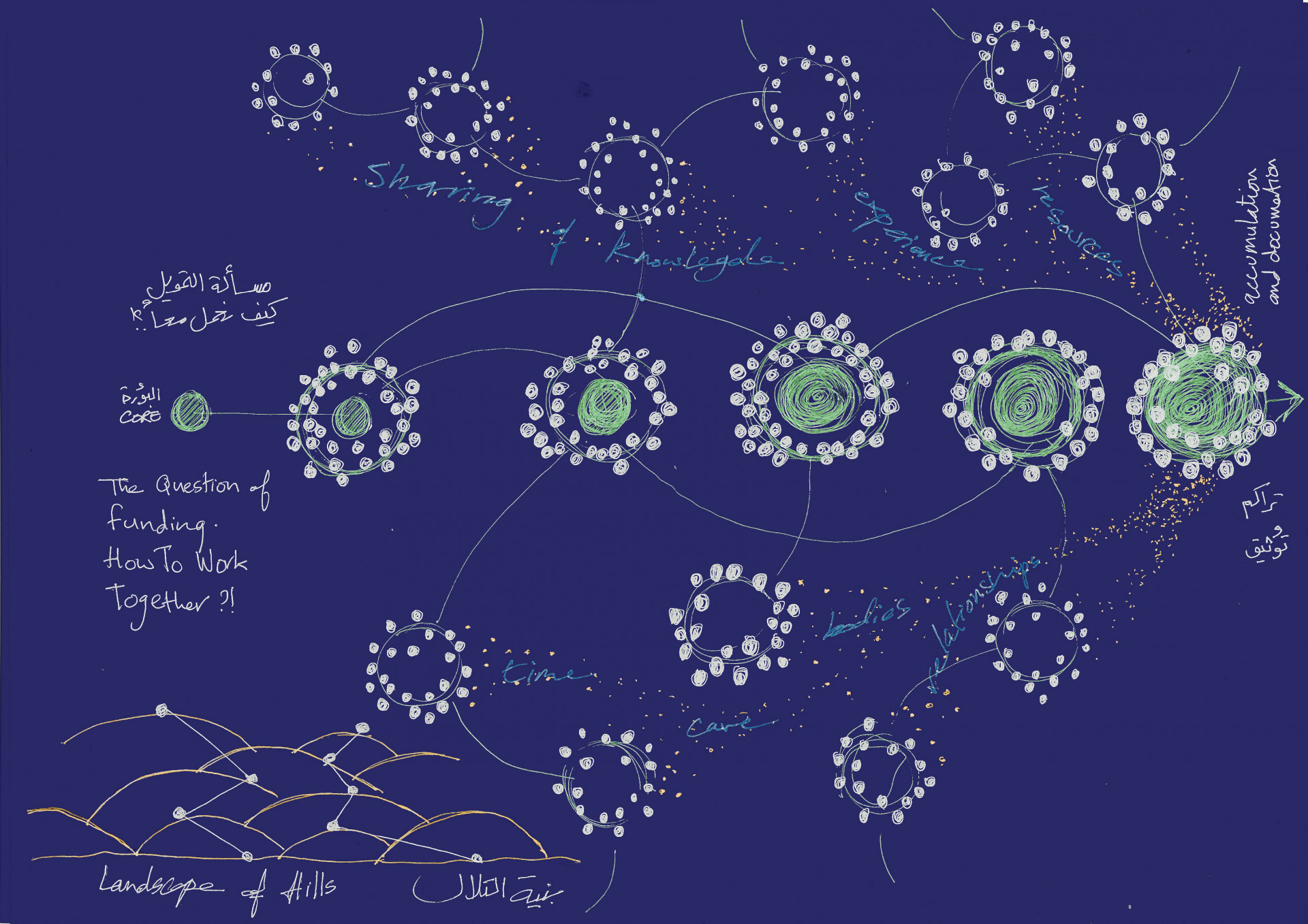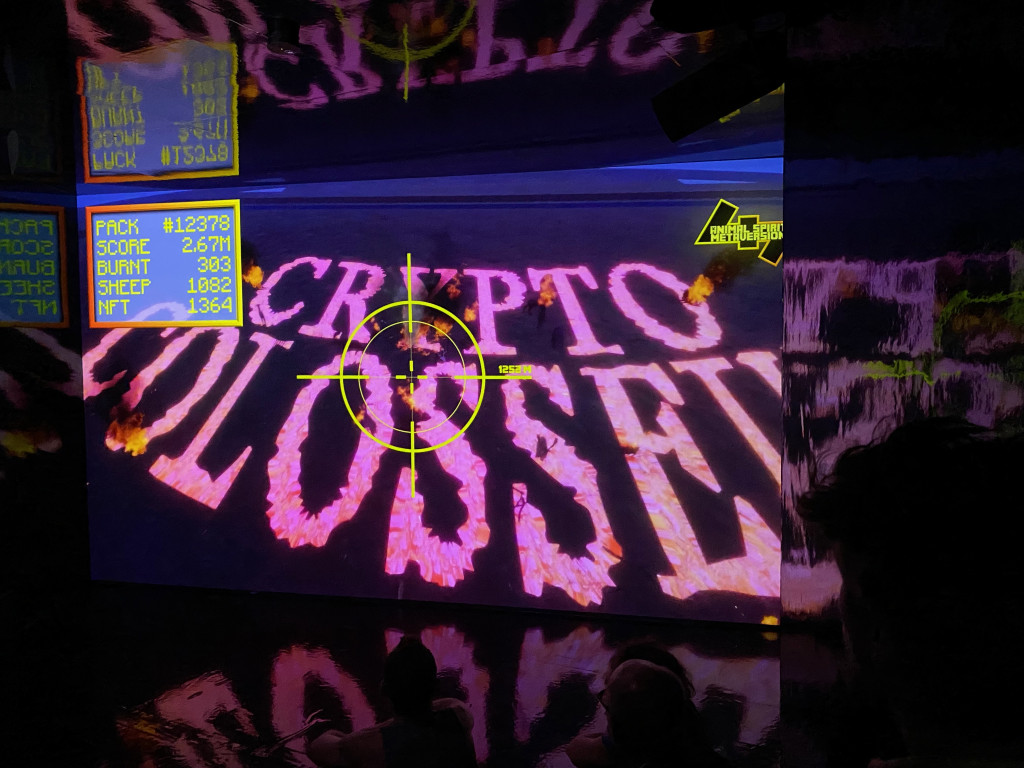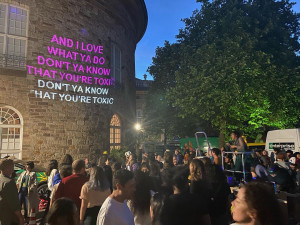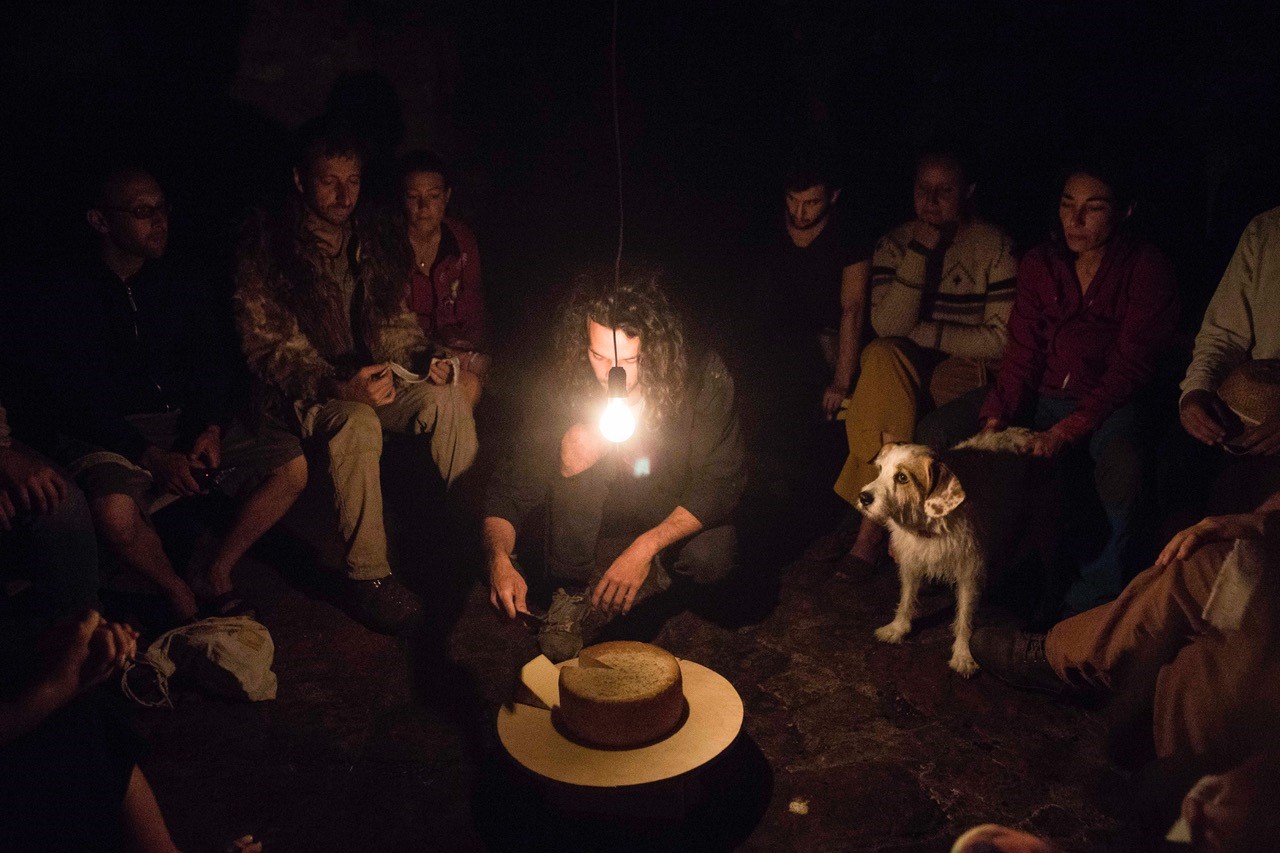Magic at the End of the World
Crisiscore is a curatorial practice that traverses physical and virtual spaces, seeking the sublime in precarity and disaster.


Amid the overlapping controversies surrounding this year’s edition of Documenta, the quinquennial contemporary art survey in the German city of Kassel, there are two projects that tell very different stories about the urgency and utility of alternative currencies. Hito Steyerl, who was participating as part of the Inland collective before she withdrew her work, invented a satirical cryptocurrency called Cheesecoin. Dayra, a project of the Palestinian art collective The Question of Funding, is a proposed blockchain-based verification system that could support the economy in occupied Palestinian territories without relying on foreign aid. The projects illustrate two roles for cryptocurrency in culture: punchline or lifeline.

Documenta is considered the most important recurring exhibition in the contemporary art world. Founded in 1955 to bolster West Germany’s cultural and economic recovery after World War II, it grew to become an agenda-setting event. The 2022 edition pushed into new territory when, for the first time, an art collective was selected to curate the show: the Indonesian Ruangrupa. Instead of the superstar roster of biennial fixtures that visitors to Documenta have come to expect, Ruangrupa primarily enlisted other collectives from the Global South. The exhibition’s organizing principle was the Indonesian concept of lumbung, a barn for sharing surplus rice. Throughout the exhibition’s run, which continues through September 25, dozens of collectives have been sharing resources, holding informal talks and events, and cooking food, as well as making and displaying visual art. The experience of the exhibition feels like one of many overlapping, communal works in progress. The spirit of lumbung was on full display at the opening weekend, when a free meal of fantastically spicy Indonesian food evolved into an impromptu karaoke party where artists, critics, and Ruangrupa members screamed along to Britney Spears lyrics projected on the back wall of the Museum Fridericianum until 4:00 am. The web3 ideals of collectivity and decentralization were, for lack of a better word, central to Documenta 15.
The web3 ideals of collectivity and decentralization were, for lack of a better word, central to Documenta 15.
This edition of Documenta was deliberately unpretentious, but every iteration is still an enormous production, and there are high expectations placed on the event by the German press, public, and politicians. Half of the 42 million EUR budget comes from public funds. And while this year the non-Western curators selected mostly non-Western artists, European politics and history were very much present. Trouble started before the exhibition opened. In a country where criticism of Israel is taboo, journalists made a scandal of Ruangrupa’s inclusion of Palestinian artists and exclusion of Israeli ones; this furor culminated in the vandalization of the venue designated for The Question of Funding. Then, on the opening weekend, visitors noticed anti-Semitic caricatures in a dense, politically charged 2004 mural by Taring Padi, another Indonesian collective. The offending work was removed, but the fallout continued. Consultants were hired, politicians made demands, investigations began, and Sabine Schormann, the director general of Documenta, resigned.

Curating the show as a collection of collectives meant that the exact roster of participating artists was difficult to determine. So it came as a surprise when critics and curators arrived for the press preview and found that Hito Steyerl, one of Germany’s most prominent artists, had produced a video as a part of Inland, a collective originating in Spain that combines art, critical reflections on agriculture, and the production of cheese. Steyerl’s contribution to the group was a humorous and meandering video installation based on economist John Maynard Keynes’s concept of “animal spirits,” the instincts and emotions that drive consumer behavior. The video revolves around a fictional artist-focused reality TV show that was canceled due to Covid, then morphed into a video game in the metaverse where participants battle animals to earn NFTs. This narrative is woven into another one about Spanish shepherds who create their own cryptocurrency called Cheesecoin, drawing parallels between decentralized finance and the decentralized microbiome required to cultivate cheese. The walls of the darkened, cave-like gallery where the video played were studded with glowing pink orbs containing plants and wheels of cheese connected to electronic sensors. Like the reality TV show, Cheesecoin was a plot point in Steyerl’s playful video. It was a vehicle for cultural commentary, rather than an actual form of artistic production. For Steyerl, crypto and reality TV are just topical fodder, signs of the times.
As the controversy around Taring Padi’s anti-Semitic imagery grew, Documenta struggled to manage the fallout. In July Steyerl announced she was pulling her video from the show, citing Documenta’s handling of the crisis, as well as reports of poor working conditions for the exhibition’s production crew. The rest of Inland’s installation remained. The Question of Funding, meanwhile, persisted despite the vandalism and presented an inspiring collection of artworks produced by artists working under stifling conditions in Palestine. In addition to these paintings and community events, the collective displayed videos explaining Dayra, a project that proposes the use of blockchain technology to track and circulate economic value when traditional money is scarce. It is founded on the idea that while the harsh political and economic realities of Palestine may deprive communities of funds, value is still abundant. What those communities need is a way to measure and exchange that value, independent of political turmoil and neoliberal foreign aid structures. Dayra is the Arabic word for “circle,” and the project begins with existing circles of trust, which it hopes to empower and grow. Notions of shared value and decentralization are everywhere in Documenta 15, embodied in the concept of the lumbung. Dayra is one of the few instances where blockchain technology is employed to further this idea, and it’s perhaps the most earnest.
Documenta has such a rich history of artistic directors and participants using the exhibition as a forum for renegotiating what art can be—and what role artists play—that institutional critique is baked in. Consequently, artists must use as much strategy and creativity to navigate their relationship to the institution as they do to produce their work. The choice to participate, or to withdraw, is a gesture open to critique like any other. Steyerl’s frustration with Documenta’s leadership is understandable, but her choice to remove her video is odd. When she participated in the 2013 Istanbul Biennial, she produced a video lecture in which she exposes and discusses the fact that prominent sponsors of the exhibition are weapons manufacturers. She makes a case against artists’ boycotts. “Rather than withdraw from such spaces because of their connection with military violence and gentrification,” she says, “I would, on the contrary, try to show this video work in every single art space connected to this battlefield.” With her withdrawal from Documenta 15, Steyerl reversed her position. Instead of continuing to engage with an institution in crisis, she chose to wield her considerable reputation to signal her disapproval of the chaotic and insufficient way that Documenta was addressing its controversies. Withdrawal is the easy way out. It’s a way for artists to save face by removing themselves from the complicated jumble of competing interests that are always at play in large exhibitions. That messiness, and the surprising outcomes it can produce, is something Steyerl once appreciated.
Documenta 15 was a show for artists who share resources, credit, survival strategies, and even blame.
The Question of Funding, by contrast, did not have the luxury of withdrawal. The international stage of Documenta was too valuable an opportunity for the lesser-known collective to pass up. More than that, to withdraw would be to capitulate to the hate and violence of those who attacked their venue before it even opened. The entirety of Documenta 15, including its successes and missteps, is about the combined chaos and potential of collectivity and decentralization. This was, after all, not a show for art stars. It was a show for artists who share resources, credit, survival strategies, and even blame. The contrast between the approaches of Steyerl and The Question of Funding is perfectly encapsulated by their two cryptocurrencies: Cheesecoin, a lighthearted and topical plot point in a video, versus Dayra, an attempt to manifest the spirit of lumbung on the blockchain in order to empower communities struggling under occupation.
Kevin Buist is a design strategist, curator, and writer based in Grand Rapids, Michigan.
